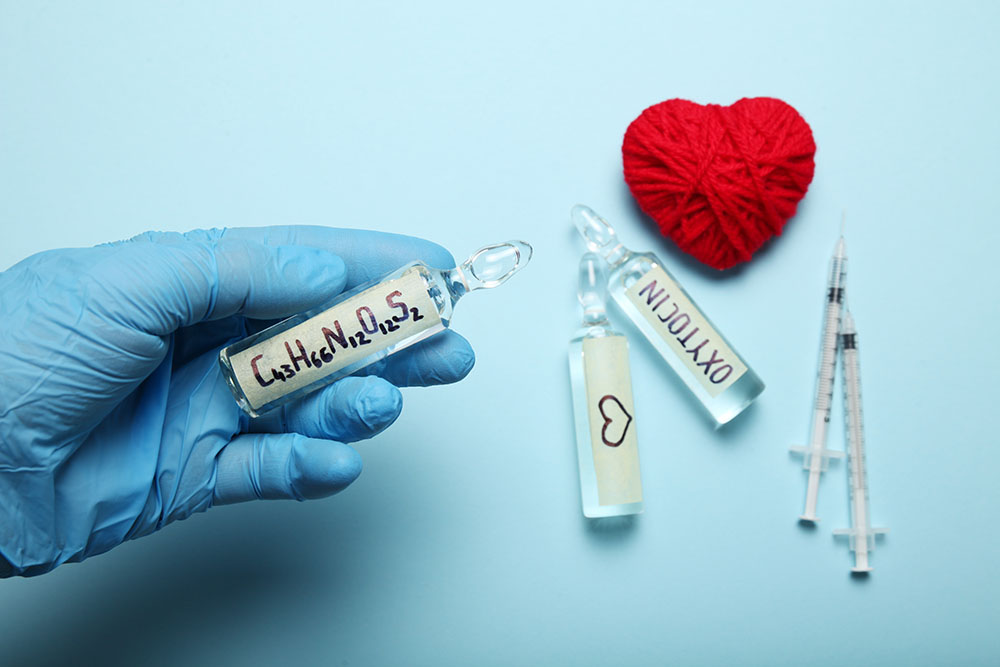One of the greatest unsolved mysteries of the universe is the inexplicable pull that envelopes two people together in the millennia-old emotion called ‘love’. Love has always been considered to be something abstract, with no basis in either logic or science. How else would you explain the idea of love at first sight? Or a torrid and passionate romance that ends in a messy divorce? If love has a fool-proof formula behind it, surely these concepts don’t tie in well with that formula.
The International Science Council believes that “love is broken down into three categories – lust, attraction, and attachment. Each category is identified by a set of hormones released from the brain. Lust releases testosterone and estrogen, while the second stage -- attraction -- releases dopamine, serotonin, and norepinephrine, the hormones that give us warm and fuzzy feelings. In the final stage -- attachment -- the brain releases oxytocin and vasopressin. While oxytocin gives us a surge of positive emotions, vasopressin is linked with physical and emotional mobilisation. Biologically, it helps support vigilance and behaviours needed for guarding a partner or a territory.”
Now, this is progress, but it only explains how the process of love takes place. It doesn’t tell us why we experience it with a few people – or one person - and not others. Psychologist and relationship counsellor Manjula MK says, “Some relationships may seem incredulous to the detached outsider viewing it from the periphery. But they make sense to the person or people who are in these relationships. Love is a complex subject, and we have just begun to scrape the surface of it. One of the breakthrough research findings has been the influence of certain hormones that stimulate romantic love. Yet another is the idea that evolution has something to do with how human beings perceive love, what it ideally entails, and why we’re ready to chase fairy-tale endings, instead of practical mating opportunities. However, all these breakthroughs haven’t given us any more insight into how to get it right or help others get it right."
“For instance," she adds, "I have clients coming in who have specific ideas about the kind of person who is right for them – culturally, socially, ideologically, and financially. Even if they’re already dating this person, chances are they’re not happy just because he or she ticks certain boxes. Sometimes they’ll surprise you by eventually ending up (happily!) with someone far removed from their original ideal. So, I think we have to wait a bit for love to make sense in a scientific way.”

The origins of love are hazy. Findings suggest that parent-child love dates back to dinosaurs around 200 million years ago in the late Triassic and early Jurassic periods. As far as romantic love goes, it is only with the gradual evolution of mammals, that the idea of lust and procreation was replaced with a gentler way of caring, bonding, seeking protection, and aligning with one’s partner even while being part of a larger community. In a lot of non-monogamous mammal species though, males don’t stick around long enough to co-parent. However, some animals like beavers and wolves do forge long-term relationships, with concepts like family and commitment coming into play. Our ancestors, the Neanderthals, were also known to form these long-term bonds, a trait that has been passed on to present-day humans through their DNA.
“Love isn’t a switch. You can’t just turn it on whenever you feel like, based on science alone. The best explanation that I can think of after three decades of practice, is that love is a mix of several things,” says Jaipur-based psychologist, Guna Mithra. “It is a mix of chemistry, consideration of social factors, practicality, as well as physical and emotional gratification – otherwise known as compatibility. All of us are not the same. Based on how each individual is wired, they prioritise these aspects differently."
“As we now know, we fall in love with our brains, not our hearts," she explains. "For some people, chemistry and the need for ‘sparks flying’ wins hands-down, while for others, they are able to take a more rational approach while also falling in love. As time goes by, this love grows into a more conscious attachment, and couples who want to see it through should ideally create mutual bonds of healthy co-dependency, physical compatibility, and a common purpose or vision for life ahead.”
In 1986, Dr John Gottman opened The Gottman Love Lab at the University of Washington, a first of its kind that researched the science behind relationships. In 1992, Dr Gottman and two of his colleagues conducted an experiment with 52 heterosexual couples, interviewing them about their relationships. They predicted with 94 per cent accuracy which couples would divorce and which ones would stick together – a fact proven three years later. They reviewed seven variables, including affection, negativity, expansiveness, gender stereotypes, volatility, disillusionment, and team behaviour, before they made their assessments and findings. Since then, Gottman’s Love Lab is just one of the many organisations that have tried to make logical sense of love. Behavioural observations, brain MRIs, and experiments are just some of the tools being used, but progress remains slow.
Part of the charm of love and romance is the fact that it isn’t clinical. Everyone from ancient poets and philosophers to 20th-century popstars has waxed eloquent about the innate beauty of this unique emotion and alluded to its intangible quality. Remember Boyzone’s ‘love me for a reason, let the reason be love’? Or Elizabeth Barrett Browning’s ‘I love thee to the depth and breadth and height, My soul can reach, when feeling out of sight’? Eventually, when people do fall for one another, the science and mathematics of it are going to be far, far removed from their minds. What will remain is the warm, fuzzy feeling that often can’t be put into either words or equations.